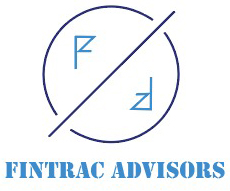Strategic Exit Planning: Voluntary Liquidation under the IBC, 2016

Rohit Parasrampuria
Rohit Parasrampuria is a seasoned lawyer with 8+ years of experience in litigation and dispute resolution. A first-class commerce graduate from St. Xavier’s College, Kolkata, and a law graduate, he also holds dual memberships with ICAI and ICSI, along with a certification in Forensic Accounting and Fraud Detection. Rohit specializes in tax disputes, IBC matters, and resolving both family and corporate conflicts. His strong blend of legal and financial expertise makes him a trusted advisor and effective litigator.
OVERVIEW
Global business law recognizes a company’s perpetual existence unless wound up as a last resort, typically during insolvency. However, liquidation may also occur voluntarily when members collectively decide to dissolve the company for reasons unrelated to financial distress.
In India, company law was governed by the Companies Act, 2013, until the 2016 introduction of the Insolvency and Bankruptcy Code (IBC). Section 59 of the IBC, supplemented by the IBBI (Voluntary Liquidation) Regulations, 2017, now regulates voluntary liquidation for solvent companies.
This article analyzes India’s voluntary liquidation framework, examining legal provisions and judicial interpretations to provide a jurisprudential perspective.
INTRODUCTION
A company is considered perpetual until legally wound up. Liquidation is typically a last resort after revival efforts fail. While often associated with financial distress, voluntary liquidation occurs when solvent companies choose to wind up by shareholder approval for strategic reasons, serving as a tax-efficient method of asset distribution.
This concept was first introduced under Section 484 of the Companies Act, 1956, and was later incorporated in Section 270 of the 2013 Act. Though Sections 304-325 contained detailed provisions, these were superseded by Section 59 of the Insolvency and Bankruptcy Code (IBC) with the IBBI (Voluntary Liquidation) Regulations 2017, effective April 1, 2017.
The IBC, applicable only to corporate persons, streamlined the previously time-consuming process, enhancing investor confidence. The current framework aligns with the US and UK systems. As of September 2022, 1351 corporate persons initiated voluntary liquidation, out of which 827 voluntary liquidations were completed and 524 are ongoing, thereby demonstrating the Code’s effectiveness. Thus, the goal of this article is to critically assess the evolution and present state of the voluntary liquidation procedure in India, as well as pertinent laws and how it compares with those of other countries.
ARTICLES CONTAINING JUDICIAL PRONOUNCEMENTS: CRITICAL ANALYSIS
This is broken down into three sections: a brief overview of the current provisions and the voluntary liquidation process [A], assessing the affected regulatory agencies, such as the NCLT, ROC, and IBBI [B], and the pertinent case law [C].
A. Present Legal Framework-
Section 59 of the Code, r/w Regulations now in effect, provides a thorough method under the Code, which may be broken down into the following steps:
- Affidavits from the directors or selected partners attest to the declaration that the business has no debt or can pay off its obligations with the proceeds of assets to be sold, and that it is not set up to defraud any person. Such a declaration must be filed with the ROC. The declaration must be accompanied by attachments, including a report from a registered valuer and audited financial accounts for the last two years or since incorporation, whichever is earlier.
- Initiation of the Process: This can be accomplished by passing a special resolution of the members of the company requiring the company to be liquidated voluntarily, either upon the occurrence of a predetermined event or the expiry of a duration, if any, fixed by its articles that the company shall be dissolved and appointing an insolvency professional to act as the liquidator. The company shall notify the ROC and the Board about the resolution to liquidate the company within seven days of such resolution or, where applicable, upon creditor approval.
- Approval from the creditors, if the business has debt – The approval of creditors holding two-thirds in value of the company’s debt is required within seven days of the passing of the special resolution.
- Commencement – The day the resolution is approved, the voluntary liquidation process is considered to have started, and as a result, the corporate debtor is required to cease its operation.
- Public Announcement Required – Within five days of the liquidator’s appointment, the liquidator will publish a statement in Form A, Schedule I. Such an announcement will solicit stakeholder claims and be published in newspapers in both English and the regional language, on the website of the corporate entity (if any), and on the website of the Board (IBBI).
- Liquidator’s Proceeding: The liquidator conducts an initial assessment and provides a report within 45 days of the liquidation commencement date. The capital structure, suggested plan of action, and estimates of its assets and liabilities as of the liquidation commencement date must be covered in the report. Additionally, he has to keep track of his costs as well as the required registers and books of account.
- Claim Verification – Within thirty days of receiving the claims, the liquidator verifies them. A creditor may file an appeal with the adjudicating body in the event of denial.
- Bank Account for Voluntary Liquidation – The liquidator must open a bank account with a scheduled bank, and any payments over five thousand rupees must be made by cheque or online mode.
- Distribution – The liquidator must distribute the profits within thirty days of realization, after deducting the incurred expenses.
- Completion -The Liquidator shall endeavour to complete the liquidation process and submit the Final Report within 270 days from the liquidation commencement date where the creditors have approved and 90 days from the liquidation commencement date in all other cases. If this time is extended, he must hold a meeting, present a status report, and take the appropriate actions.
- 1 Preparation and Submission of Final Report with NCLT: Following the conclusion of the proceedings, the liquidator is required to prepare a final report in the format specified by the NCLT. This report must then be sent first to the Board and the Registrar. The Liquidator shall submit the final report and the compliance certificate in Form H along with the application under subsection (7) of Section 59 to the Adjudicating Authority.
- NCLT’s order and its completion and submission to the Registrar: The corporate person is dissolved as of the date of the pronouncement of the order by the Adjudicating Authority. Additionally, the statute mandates that the ROC get a copy of the order within 14 days.
B. Regulatory Bodies Impacted-
- NCLT: In these cases, the NCLT has been designated as the adjudicating authority. It has the authority to declare a corporate person “dissolved”. But only once the liquidator has filed for dissolution and complied with all Code and Regulation requirements does it enter the final phase of the liquidation procedure.
- ROC: The ROC’s function is that of a regulatory body and record keeper, ensuring all legal steps in the voluntary liquidation process are documented and transparent.
- IBBI: Throughout the proceedings, the Board plays a passive role. Professional in nature, the liquidator operates indirectly under the Board’s direction. The Board is also responsible for other duties, including the publication of claim notices.
C. Case Laws-
Relevant Case Laws
- Case No. CP(IB) 38/KB/2024
Case Name: In the matter of Varma Brokerages Private Limited before NCLT, Kolkata Bench
- Case No. CP(IB) 217(KB)2022
Case Name: In the matter of Sambodhi Healthcare Private Limited
- Case No. CP(IB) 39/MB-IV/2023
Case Name: In the matter of Proterra Investment Advisors India Private Limited
adipiscing elit. Ut elit tellus, luctus nec ullamcorper mattis, pulvinar dapibus leo.
Comparative Evaluation with Other Nations:
- America, the United States
The procedure offered in India is fundamentally comparable to that in the United States. The liquidation procedure is covered in Chapter 7 of the U.S. Bankruptcy Code. An individual, corporation, limited liability partnership, trust, not-for-profit organization, or even an unincorporated association may start it. The board of directors may also do so in response to a specific event. A liquidator is then appointed and held accountable to the shareholders and creditors. Furthermore, the criterion of the company’s solvency stays the same; if it has no debts, the liquidator and shareholders are the only ones who oversee the procedure.
- The United Kingdom
The procedure is a little different here than it is in India. The Insolvency Act of 1986 governs it. It comprises two categories of voluntary liquidation. One is voluntary liquidation, which is when the business is insolvent and is started by the creditors. The second is the members’ voluntary liquidation, which necessitates a fair bankruptcy statement from the company itself. In this case, there is no question about the corporate entity’s insolvency; on the contrary, it is solvent and merely wants to liquidate itself to pay its future debts. A three-fourths majority vote is required.
scing elit. Ut elit tellus, luctus nec ullamcorper mattis, pulvinar dapibus leo.
Conclusion
Section 59 of the Code, 2016 provides a structured and legally sound framework for solvent corporate entities seeking an orderly exit from business. It ensures that companies can wind up operations transparently, in a time-bound manner, and with due regard for the interests of all stakeholders. The process strengthens creditor confidence and upholds the principles of sound governance. As India continues to refine its insolvency regime, voluntary liquidation under Section 59 serves as a crucial tool for enabling responsible business closure while maintaining legal and financial discipline.
Disclaimer
The content published on this blog is for informational purposes only. The opinions expressed here are solely those of the respective authors and do not necessarily reflect the views of Fintrac Advisors. No warranties are made regarding this information’s completeness, reliability, or accuracy. Any action taken based on the information presented in this blog is strictly at your own risk, and we will not be liable for any losses or damages resulting from its use. It is recommended that professional expertise be sought for such matters. External links on this blog may direct users to third-party sites beyond our control. We do not take responsibility for their nature, content, or availability.


